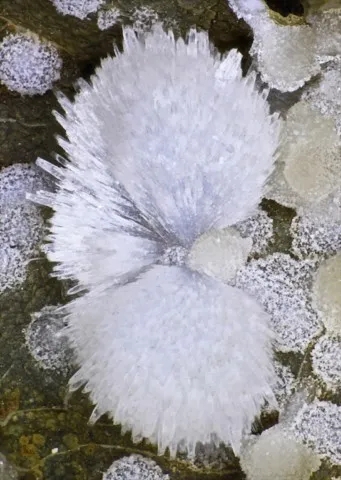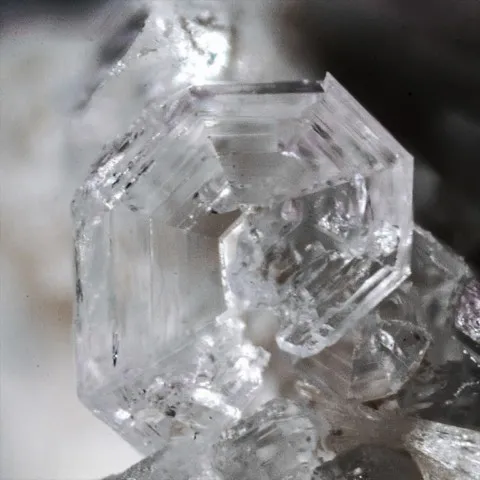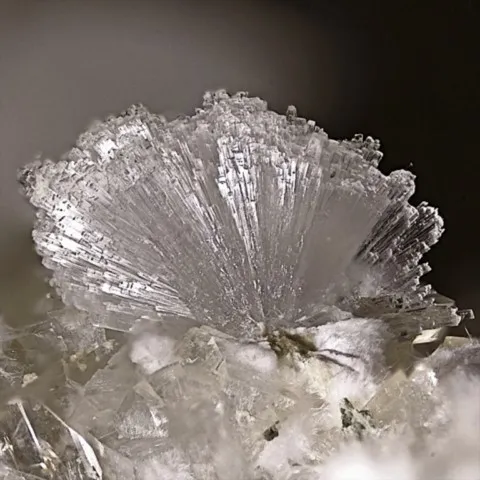DACHIARDITE
Class : Silicates
Subclass : Tectosilicates
Crystal system : Monoclinic
Chemistry : Na4Al4Si20O48 13H2O
Rarity : Very rare
Dachiardite is a very rare zeolite, which forms a continuous series with its sodium equivalent, sodium-dachiardite. It is found in basalt cavities, hydrothermal veins and pegmatites, as well as in hydrothermalized volcanic tuffs. It is a colorless to yellowish zeolite which associates with heulandite, mordenite and ferrierite. It was named in honor of mineralogy professor Antonio D'Achiardi of the University of Pisa who described the mineral. The crystals are lamellar or fibrous prisms not exceeding 5 mm, sometimes grouped in radiated aggregates.
Main photo : Dachiardite from Altoona, Washington, USA © Rudy Tschernich
Dachiardite in the World
Twinning
A twin on {110} is known and can be cyclical eightlings.
Fakes and treatments
No fakes listed for this mineral species.
Hardness : 4 to 4.5
Density : 2.16
Fracture : Conchoidal
Streak : White
TP : Transparent
RI : 1.488 to 1.499
Birefringence : 0.006
Optical character : Biaxial +
Pleochroism : None
Fluorescence : None
Solubility : Acids
Magnetism : None
Radioactivity : None





